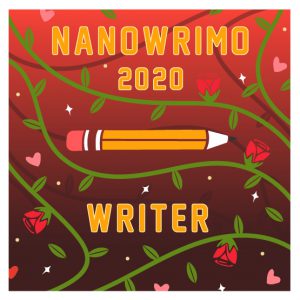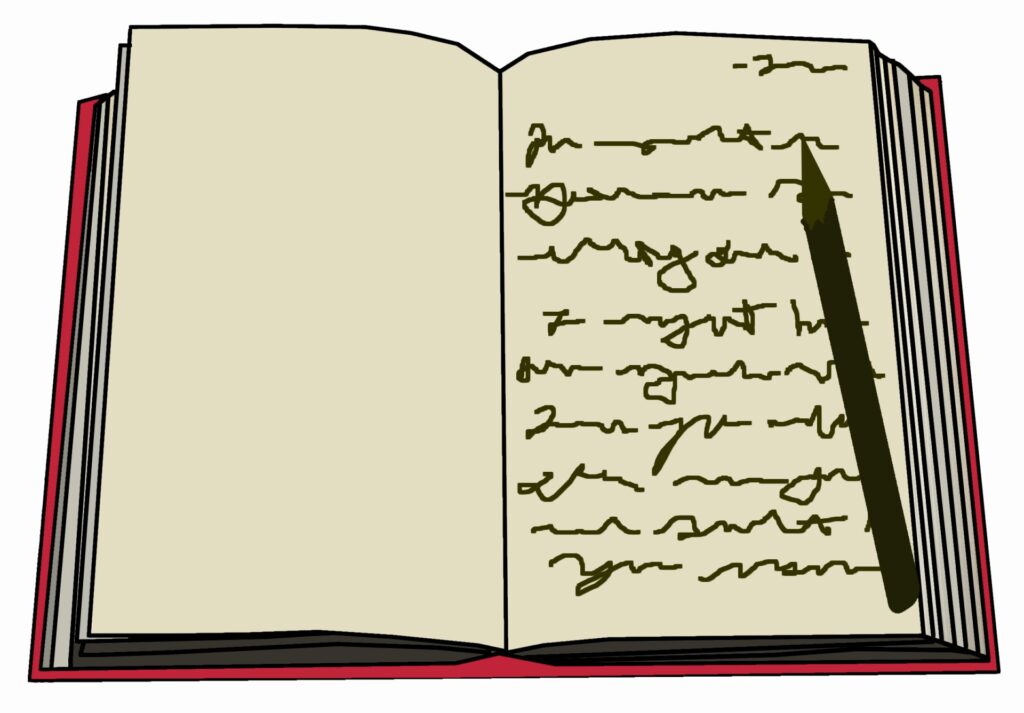We are nearly half way through our NaNoWriMo (National Novel Writing Month) preparation series, and it might be time to set aside our novel for a moment and discuss journaling during NaNo.

You may ask, why would anyone want to keep a journal and produce even more words during the month you are supposed to be writing 50,000?
Back in 2008 when I attempted NaNoWriMo for the first time, I wrote a blog of my experiences. I was a bit embarrassed to admit that I had more fun blogging about writing a novel than actually doing it, so I kept quiet about it. That is, until last week when I attended a webinar where one of the speakers suggested journaling during NaNo. Turns out, what I was doing wasn’t as counterproductive as I had imagined.
Why Journal Before and During NaNo?
There are a number of reasons to consider it.
You can use a journal to process your thoughts on the page. Can’t decide between two similar choices? Write out your ideas and feelings about each. Many times the answer will emerge. This method can be useful to work through problems from your novel as well as real life.
Keeping a written record can be a form of self care. In a recent article, The New York Times suggests, ” …writing in a journal can lead to better sleep, a stronger immune system, more self-confidence and a higher I.Q.”
Journals also can be mined for your novel. Sometimes a quick glance through an old journal will spark an idea. Many authors record snippets of dialogue, descriptions, etc. to be used at some later date.
Use your diary to help remember past events and struggles, to learn from your own mistakes. For example, in my old blog I mentioned I had written 9000 words with no idea what my setting was going to be. It might have been why I failed. Therefore, many of my posts this month have been about developing a setting. (On the other hand, I said to never adopt a kitten during NaNo, but ended up with another kitten recently. I guess it doesn’t always work.)
You can use a journal to start a habit of writing each and every day and the momentum can help carry you through November. The webinar speaker mentioned she warms up each day with the journal and moves into the novel after ten minutes of so.

What’s the Best Format?
I wrote my first NaNo journal in a blog that I was sure nobody read, which had advantages and disadvantages. The advantage was that it was searchable and easy to add photographs. I like visuals. One of the disadvantages was that I felt obligated to use good grammar, spelling, etc. because it was “published” and therefore I spent more time on it than I would have scribbling in a private journal.
The webinar speaker said she kept her journal in the Scrivener file with her novel. She creates a folder where the research stuff goes, and thus it doesn’t go toward her novel word count. The advantage of writing in Scrivener is it also is searchable and if you decide to poach a piece of your journal writing, it is typed and ready to go. She didn’t mention this, but a disadvantage for me would be the temptation to click on my journal folder whenever I got stuck.
Over the years, I have returned to a composition notebook and pen for jotting notes and ideas. An advantage is that it is easy to draw as well as write, so you can create diagrams, mind maps, etc. There’s something about the physical act of writing rather than typing that’s nice, too. A disadvantage, however, is that no matter how carefully I number the pages and keep a table of contents, I can never find that one paragraph I wanted to read again.
One Final Thought
Above I wrote that you might be tempted to journal rather than work on your novel. If that happens, turn lemons to lemonade and do a memoir instead.
Do you journal? Are you going to keep a journal during NaNo?
#####
Visit our 30 Day Novel Prep Page for all the links.



